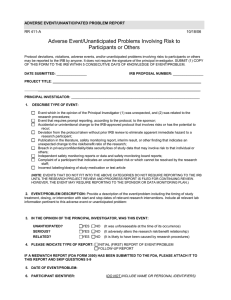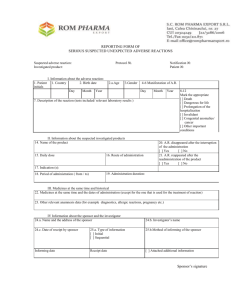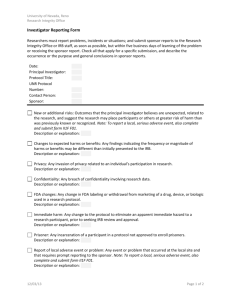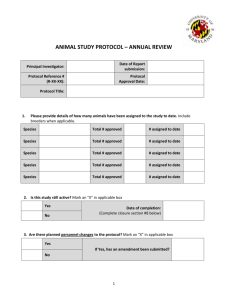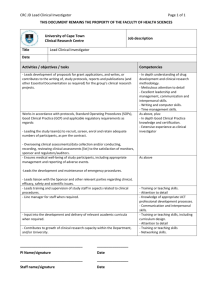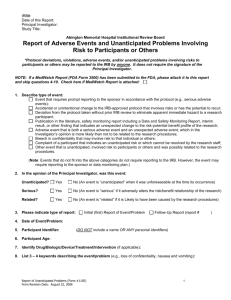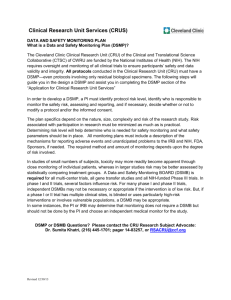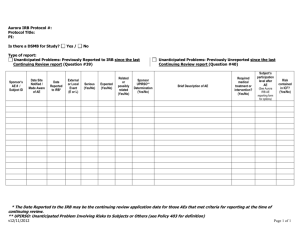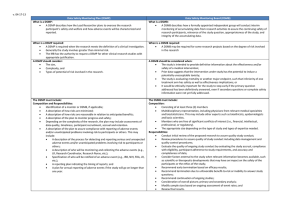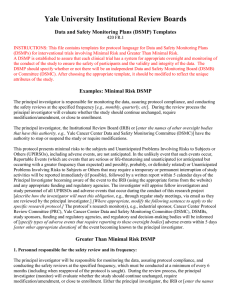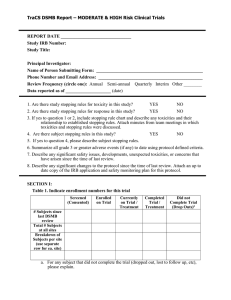UT Southwestern Medical Center Institutional Review Board
advertisement
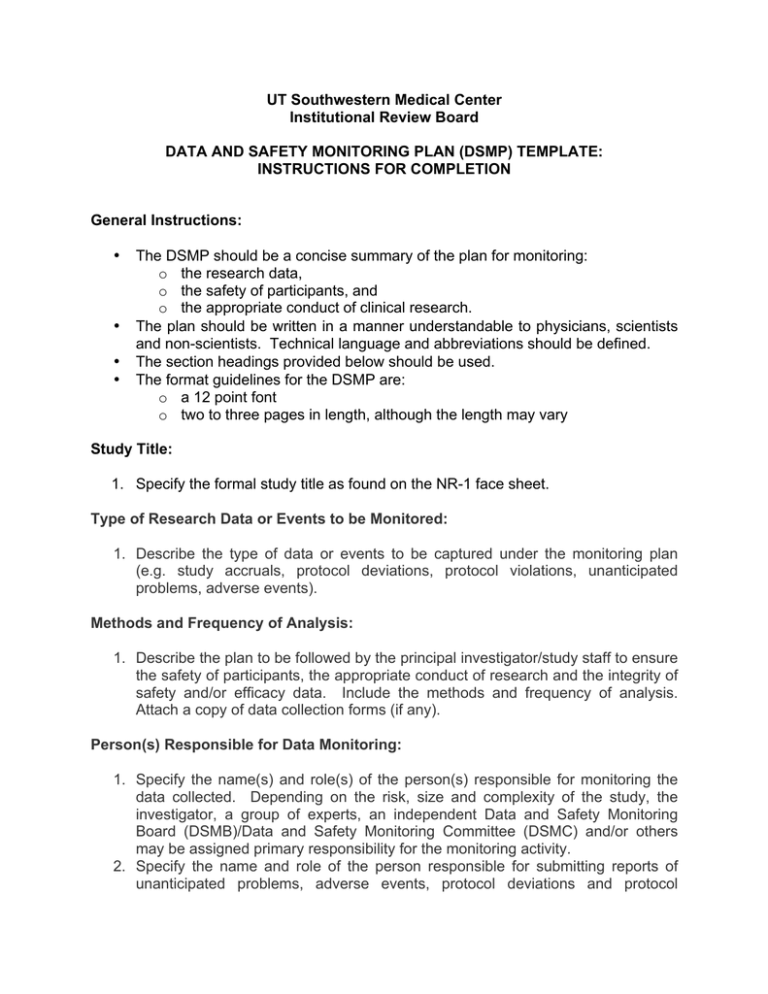
UT Southwestern Medical Center Institutional Review Board DATA AND SAFETY MONITORING PLAN (DSMP) TEMPLATE: INSTRUCTIONS FOR COMPLETION General Instructions: • • • • The DSMP should be a concise summary of the plan for monitoring: o the research data, o the safety of participants, and o the appropriate conduct of clinical research. The plan should be written in a manner understandable to physicians, scientists and non-scientists. Technical language and abbreviations should be defined. The section headings provided below should be used. The format guidelines for the DSMP are: o a 12 point font o two to three pages in length, although the length may vary Study Title: 1. Specify the formal study title as found on the NR-1 face sheet. Type of Research Data or Events to be Monitored: 1. Describe the type of data or events to be captured under the monitoring plan (e.g. study accruals, protocol deviations, protocol violations, unanticipated problems, adverse events). Methods and Frequency of Analysis: 1. Describe the plan to be followed by the principal investigator/study staff to ensure the safety of participants, the appropriate conduct of research and the integrity of safety and/or efficacy data. Include the methods and frequency of analysis. Attach a copy of data collection forms (if any). Person(s) Responsible for Data Monitoring: 1. Specify the name(s) and role(s) of the person(s) responsible for monitoring the data collected. Depending on the risk, size and complexity of the study, the investigator, a group of experts, an independent Data and Safety Monitoring Board (DSMB)/Data and Safety Monitoring Committee (DSMC) and/or others may be assigned primary responsibility for the monitoring activity. 2. Specify the name and role of the person responsible for submitting reports of unanticipated problems, adverse events, protocol deviations and protocol violations to the IRB and indicated entities (e.g. NIH, FDA, sponsor). When the investigator is the sponsor of the IND/IDE, include the plan for reporting adverse events to the FDA and, when applicable, to investigators at other sites. Reporting Unanticipated Problems, Adverse Events, Protocol Deviations and Protocol Violations: 1. Describe the plan to be followed by the principal investigator/study staff for the review and reporting of: adverse events experienced by participants under their care, untoward events occurring during the course of the study, and (when applicable) sponsor safety reports and/or DSMB reports. 2. Specify the procedure and time frames for reporting to the IRB, study sponsor and/or indicated entities. Stopping Rules: 1. Define the specific stopping rules. Stopping rules are predetermined guidelines to determine that the study should be altered or stopped based on review of study-related events (e.g. failure to meet study accrual goals, study endpoints). For example, studies may be stopped when there is greater than expected morbidity and/or mortality rates or when the experimental arm in a comparison study is shown to be better or worse statistically than the standard care arm. 2. Describe the nature of the action(s) indicated by the specific stopping rule. Procedures and Time Frames for Communicating Outcomes: 1. Specify the procedure and time frames for communicating outcomes of monitoring reviews to the IRB, study sponsor and/or indicated entities. Precautions for Maintaining Data Integrity: 1. Describe the plan to be followed by the principal investigator/study staff to monitor adherence to the IRB-approved protocol and to assure the validity and integrity of the data.
